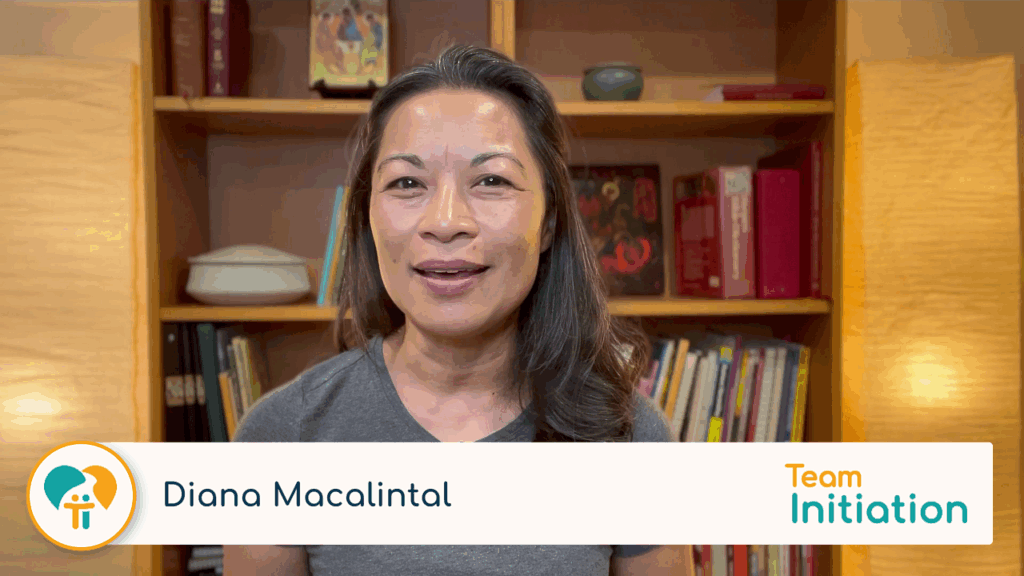I’m preparing to give a day-long workshop on mystagogy for the Archdiocese of Newark in February. Just out of curiosity, I thought I’d Google mystagogy and see what comes up. After all, many people today use search engines when they want to get information. If someone new to the RCIA wants to find out what is mystagogy what would they discover on the internet?
What’s Out There
Well, surprisingly, the results weren’t bad at all. The first was a blog, so I skipped it. Then an article by Father Paul Turner—his work is always very fine. The Free Dictionary came up next. OK. This was followed by a website by a retired Methodist clergy couple who are very active in liturgy. Clear information and helpful. Seeds were planted in the ecumenical institute at Collegeville. Our ecumenical partners are at work!
Next was a Faith Update from St. Anthony Messenger Press, followed by a good essay on the FDLC website by Sister Sandy DiMasi, longtime friend of the catechumenate. Then we had an article by our own Miriam Malone, SNJM at RPInet, entitled Six Steps to Effective Mystagogy. Go, Miriam!
Catholic.com offered us an article entitled Life Beyond Confirmation, and finally—drum roll, please—TEAM RCIA! At that point, I felt I had an adequate sample.
Models for Mystagogy
Aside from Google, however, I’ve been watching as certain trends develop.
Today in our pastoral practice, I think we are seeing several different models for mystagogy taking shape. A fairly common model is the mystagogy of reflection on the experience of the Easter Vigil. Many parishes will do this in some form. I call this the reflection / insight model.
Another model was offered in Father Ron Oakham’s recent Forum webinar on mystagogy. He offered a model of catechizing on the sacraments throughout the fifty days of the Easter season, based on the lectionary. I call this the sacramental / catechetical model.
Yet another model has surfaced through the RCL resource, Foundations in Faith, produced in the 1990s. It focuses on the neophyte Masses and especially that part of the Mass that the newly initiated now take part in: the Eucharistic Prayer and Communion rite. (Full disclosure: I was on the writing team for that resource.) I call this the Eucharistic model.
(N.B. The Foundations in Faith mystagogy manual also includes resources for experiences of a shared meal and shared social justice activity, as well as lectionary-based session plans.)
Over the past few years I’ve been writing RCIA guidelines for the Archdiocese of New York. Their advisory council suggested to me that we think in terms of models. In this context I began working on my own model. I call it the discipleship model.
The Discipleship Model
This model is governed by the question: what skills, experiences, relationships and understandings do the neophytes need in their lives now that they are initiated, in order to live as disciples? Discipleship is the measure.
Please note that what I am calling models are not mutually exclusive, as you already may have guessed. And, true to this insight, the discipleship model draws from several others. The distinction is found in the organizing principle. It begins and ends with discipleship.
Reflection on the experience of the Easter Vigil fits into the discipleship model. The experience of the sacraments of initiation, after all, is key to living as a disciple. Exploring this experience with others is an essential element.
But that’s not all. It is also important, as disciples, to get the most we can out of the second half of Sunday Mass. Sharing the Liturgy of the Eucharist with the same enthusiasm and receptivity that we’ve brought to the Liturgy of the Word is a discipleship skill.
Strengthening community bonds as full participants is part of the discipleship model too, as is mission. The rite firmly supports this. The foundation for community and mission was laid well in the catechumenate. Time to affirm it and take it a step further.
Another part of the discipleship model is intimacy with our Lord. Closeness to him. The image of the Good Shepherd is an icon of this important aspect of discipleship. It belongs in mystagogy. Jesus says in John’s gospel that he knows his sheep and they know him. The mystagogy period is a precious time to discover and enjoy that intimacy that will sustain the neophytes for the rest of their lives.
Finally, there is a golden opportunity during the Easter season to see the life of the early Church as the inspiration for our community of faith today. We hear every week from the Acts of the Apostles. I think there is a great (and largely untapped) resource here for mystagogy.
Future Posts
In another post, I will share an actual schema for this model unfolded across the seven weeks of the Easter season. It’s pretty simple, actually. Anybody can do it. I would also like to discuss the methodology of this model with anyone who is interested, because I am excited about the possibilities and I know you will help to get at what is most important and practical.
In a third post, I will share some ideas about ongoing mystagogy. You may have noticed that I did NOT suggest the fifty days as a time to catechize on the Sacrament of Penance. Many people fear that Penance is left dangling, because the newly baptized have not yet celebrated this sacrament. My own view is that an experiential catechesis on the Sacrament of Penance belongs in the year-long mystagogy that follows initiation. It needs and deserves more focus than the fifty days allow. I’ve never felt it natural to try and blend it in with the Easter season. Others may see this differently.
What About You?
I welcome your comments and suggestions about mystagogy. Do you have a model? What has worked well in your own experience?
Asking you is better than asking Google!


















Rita, I was discussing mystagogy last night in a training course I’m leading for RCIA teams. I pointed out that the Masses of the Easter season “include particularly suitable readings from the Lectionary, especially the readings for Year A” (RCIA 247). However, I’ve never seen anything about why the rite identifies Year A as more favored than the other cycles. I wonder if it is because of the selections from Acts in that year?
We also discussed mission. The mystagogical Sundays are the first time the neophytes are sent out of the liturgy for mission. Their previous dismissals have been for the purpose of “shar[ing] their joy and spiritual experiences” (RCIA 67). But now they are sent out on mission along with all the rest of the faithful. As you point out, the Acts readings are a great resource for exploring what the mission entails.
Looking forward to your future posts on this!
Nick, sorry for the delay in replying to your excellent question. I wanted to look around for primary sources concerning the formation of the Easter lectionary, but I did not find anything that addresses the question of relevance to Baptism of the readings for Year A in particular.
My conjecture has been that the semi-continuous reading in Year A of 1 Peter is especially significant, because of its baptismal themes. Around the time of the Council the theory was advanced by certain scripture scholars (Frank Cross, I believe, was one of them) that 1 Peter was a mystagogical commentary on the Baptismal Liturgy of Hippolytus (the Apostolic Tradition), then considered our oldest Roman source for baptism at the Easter Vigil. Other scholars took it as a baptismal hymn. There are many cracks in this theory, of course, but what is undeniable is that there are strong baptismal themes in 1 Peter.
In the selection of Gospel readings, the supper at Emmaus stands out in Year A as a quintessential narrative too. But it is hard to separate the two possible influence here: (1) Is it that Year A tends to have the primary readings, while B & C are ancillary; or that (2) Baptism is the outstanding theme of Easter, so Year A naturally takes it by storm.
The practical question: May we use Year A readings every year, as we do for Lent? seems to be answered in practice by “No” — at least everywhere I have been. The rite commends Year A, but doesn’t insist on it.
As for Acts, I don’t think you can make a case for Year A offering us more baptismal themes to work with. What is your own sense?
Finally, your students are lucky to have you! I hope they appreciate what a fine instructor they are getting. 😉
Hi- We have tried several models here too- and continue the reflection on the sacraments of initiation. WE have looked at a catechetical model, concentrating on the gospels in the Easter season- didn’t work as well.
I have seen other places do something like a mini-volunteer recruitment session- now that you have been fully initiated it’s your turn to give back- I resist this model strongly.
What we are exploring this year is more discernment on my own gifts and my place in the Body of Christ and building the reign of God- more Spirit-focused, more discernemnt process, more building the reign of God than parish-based alone. We’ll see how it goes.
Blessed Lent.
Hi Peggy. If you are able, you might want to sign up for the mystagogy webinar. I’m sure we won’t solve all the issues, but we’ll have an interesting discussion! More info here: http://bit.ly/hmOZrC
Nick,
Was at the webinar and went looking for Fr. Michael Joncas’ book “preaching on the Easter season” and could not find it. Would love to find out about and how to get it.
Hi Rose. Here’s the direct link:
https://teaminitiation.com/catalog/clergy1/preaching-the-rites-of-christian-initiation-forum-essay-41/
Nick
Rita,
These models are a helpful way to think about all the different things that go in mystagogy. Did I miss your other posts on mystagogy? Look forward to it!
Rita TH